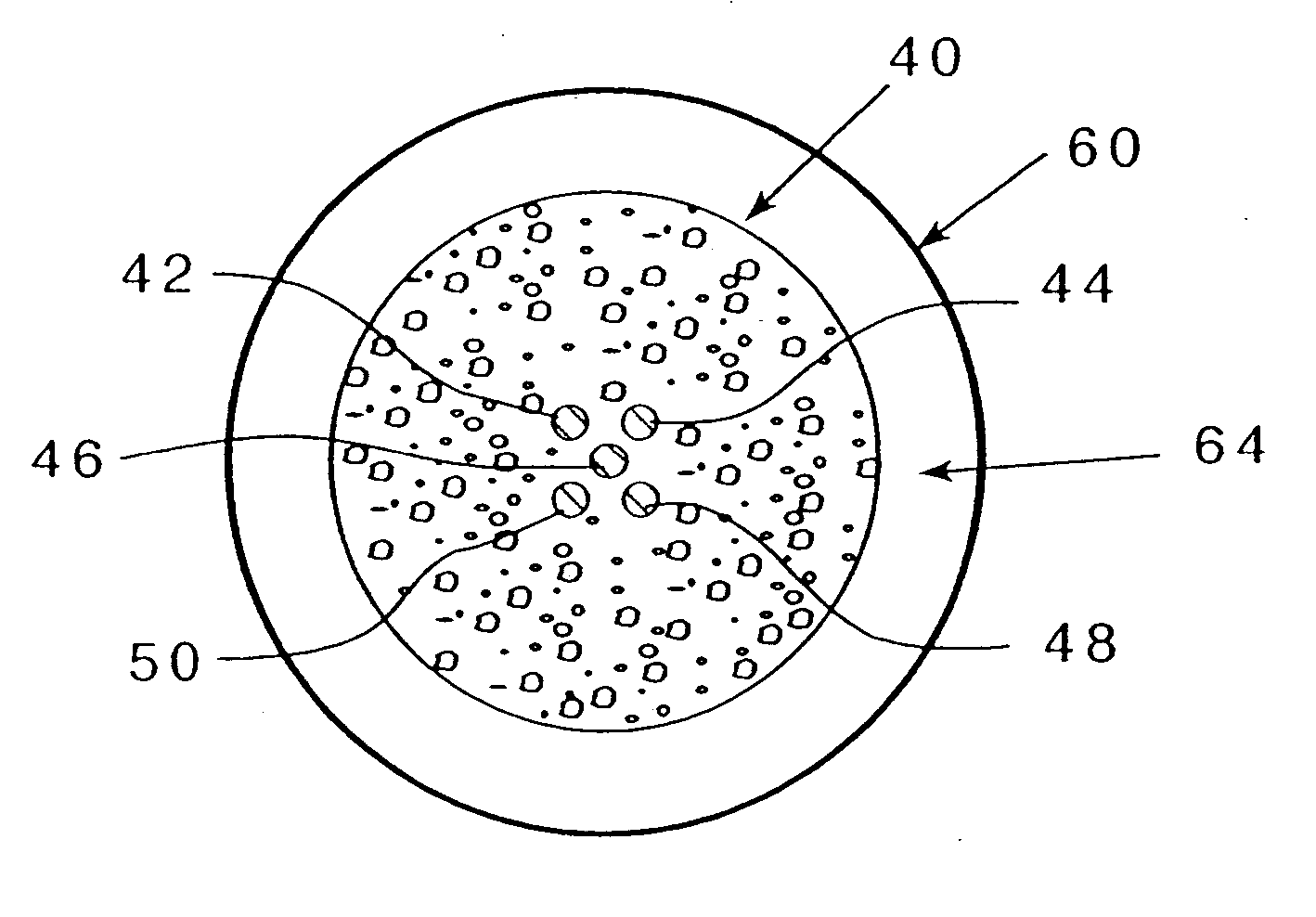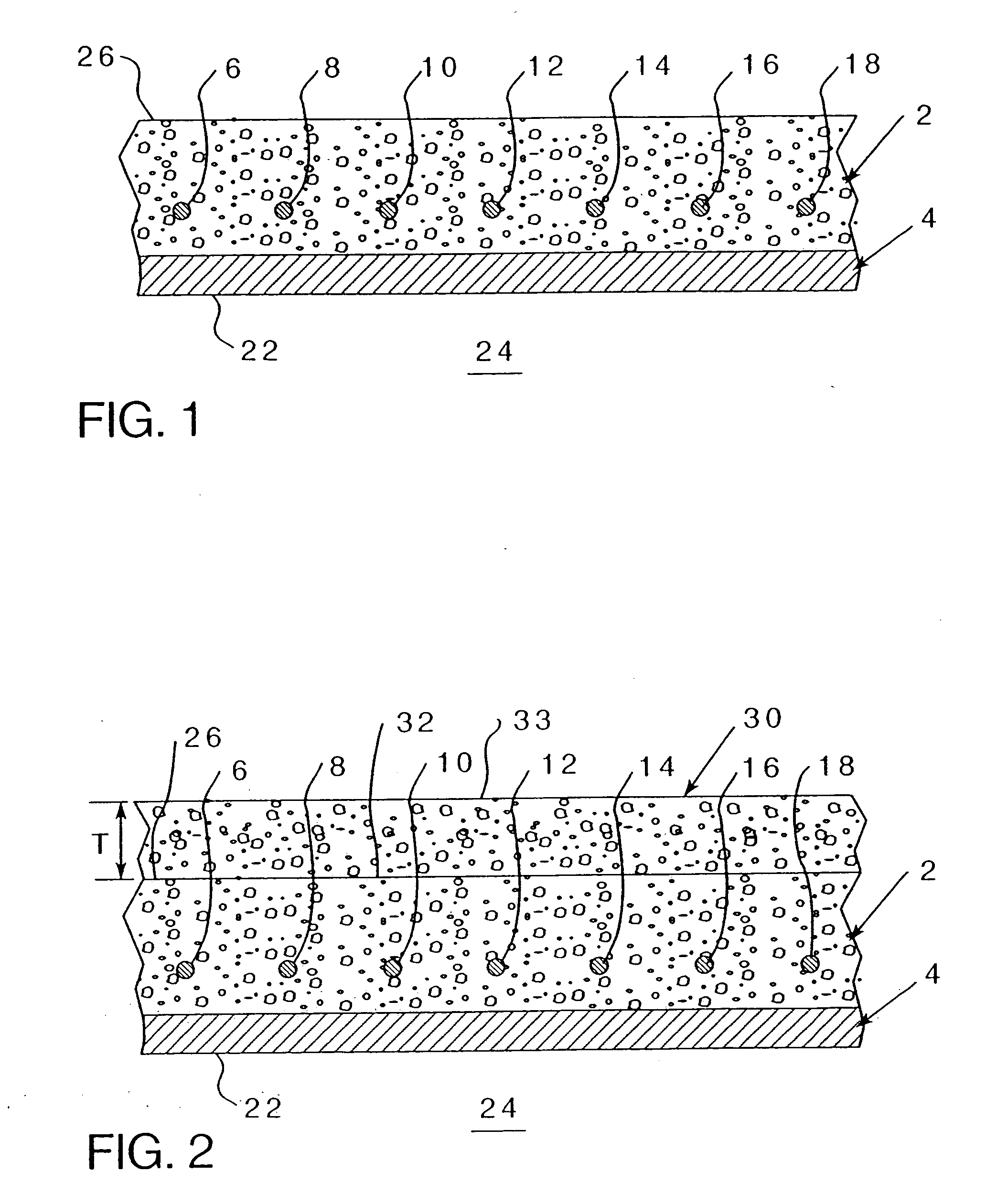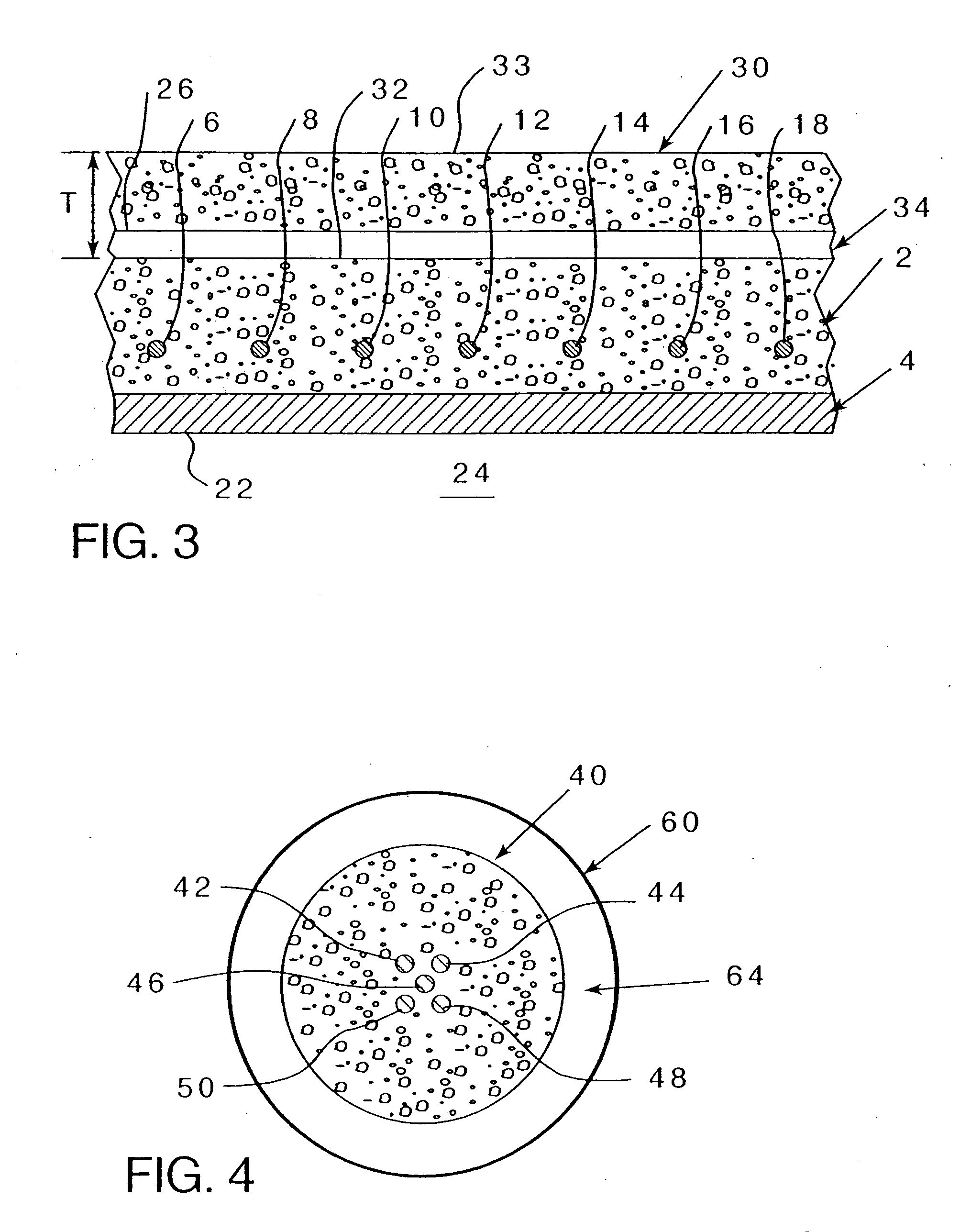In situ formation of chloride sequestering compounds
a technology of sequestering compounds and chloride, which is applied in the field of in situ formation of chloride sequestering compounds, can solve the problems of lack of tensile strength, chloride intrusion, and tendency to accelerate corrosion of the same, so as to reduce the ability of corroding metal elements and resist corrosion
- Summary
- Abstract
- Description
- Claims
- Application Information
AI Technical Summary
Benefits of technology
Problems solved by technology
Method used
Image
Examples
example 1
[0068] In the synthesis of 3CaO.Al2O3.Ca(NO2)2.nH2O wherein n=0 to 24, the following procedure may be followed.
[0069] In employing 3CaO.Al2O3 the following process of synthesis may be employed:
[0070] The presence of NaOH does not appear to interfere with sequestration of chloride or with the action of nitrite on steel and, as a result, it is not necessary to remove the NaOH by washing the product compounds. Alternatively, the solid 3CaO.Al2O3 and Ca(NO2)2.nH2O can be separated from the NaOH solution by washing and / or filtration.
[0071] In each of these two examples, the Ca(OH)2 and calcium aluminate were employed as fine powders. Ca(NO2)2 and NaNO2 are commercially available and highly soluble in water. While there are no critical particle size distributions, in general, it is preferred to have a particle size such that 99% of the powder passes through a 325 mesh sieve. Commercially available Ca(OH)2 was employed as was commercially available CaO.Al2O3 with the latter being emplo...
example 2
[0075] The phase 3CaOFe2O3.CaCl2.nH2O wherein n=10 has been created by reacting the precursors 3CaO.Fe2O3Ca(NO2)2.nH2O and 3CaO.Fe2O3.Ca(NO3)2.nH2O with chloride. This indicates that chloride ions can be sequestered in the Fe analog of Friedel's salt (3CaO.Al2O3.CaCl2.10H2O). The compounds 3CaO.Fe2O3.Ca(NO2)2.nH2O and 3CaO.Fe2O3.Ca(NO3)2.nH2O have also been produced employing 2CaO.Fe2O3. in the presence of supplementary Ca from Ca(OH)2 and nitrite or nitrate from their calcium and / or sodium salts. 2CaO.Fe2O3 may be produced by blending Fe2O3 and CaCO3 in a molar ratio of about 2:1 followed by sintering this mixture at 1150° C. for approximately 1.5 hours. The mixture of CaO and 2CaO.Fe2O3 is produced by calcining 3 moles of CaCO3 with 1 mole of Fe2O3 at 1100° C. for approximately 1.5 hours. A variety of reaction times and temperatures can be used in the synthesis of this compound or this mixture. After cooling the 2CaO.Fe2O3 or the mixture of 2CaO.Fe2O3 and CaO were ground to an ave...
example 3
[0076] The compounds 3CaO.Fe2O3.Ca(NO3)2.nH2O may be produced by calcining 1 mole of CaCO3 with 3 moles of Fe2O3 at 1100° C. for about 1.5 hours. This produces a mixture of CaO and 2CaO.Fe2O3. This mixture is then ground and reacted with either NaNO3 or Ca(NO3)2 under basic conditions. In the event that NaNO3 is used, it is necessary to add supplemental calcium for the reaction to go to completion. This may be added as CaO or Ca(OH)2 for example.
[0077] With respect to compound 3Me(II)O.(R1,R2)2O3(Me(II)(anion)2.nH2O wherein R1 and R2 are Al, Fe or Cr, anion is NO2, NO3 or OH and n is 0 to 24 where Me(II) is a cation such as Ca, anion may be partially substituted by other divalent cations or may be completely substituted by other divalent cations such as Ba, Sr, Mn, Zn, for example. For some compositions divalent anions such as carbonate or borate may be used.
[0078] Referring to FIG. 2, wherein an existing concrete structure 2 having reinforcing metal elements 6-18 (even numbers on...
PUM
| Property | Measurement | Unit |
|---|---|---|
| Mass | aaaaa | aaaaa |
| Corrosion properties | aaaaa | aaaaa |
| Molar ratio | aaaaa | aaaaa |
Abstract
Description
Claims
Application Information
 Login to View More
Login to View More - R&D
- Intellectual Property
- Life Sciences
- Materials
- Tech Scout
- Unparalleled Data Quality
- Higher Quality Content
- 60% Fewer Hallucinations
Browse by: Latest US Patents, China's latest patents, Technical Efficacy Thesaurus, Application Domain, Technology Topic, Popular Technical Reports.
© 2025 PatSnap. All rights reserved.Legal|Privacy policy|Modern Slavery Act Transparency Statement|Sitemap|About US| Contact US: help@patsnap.com



